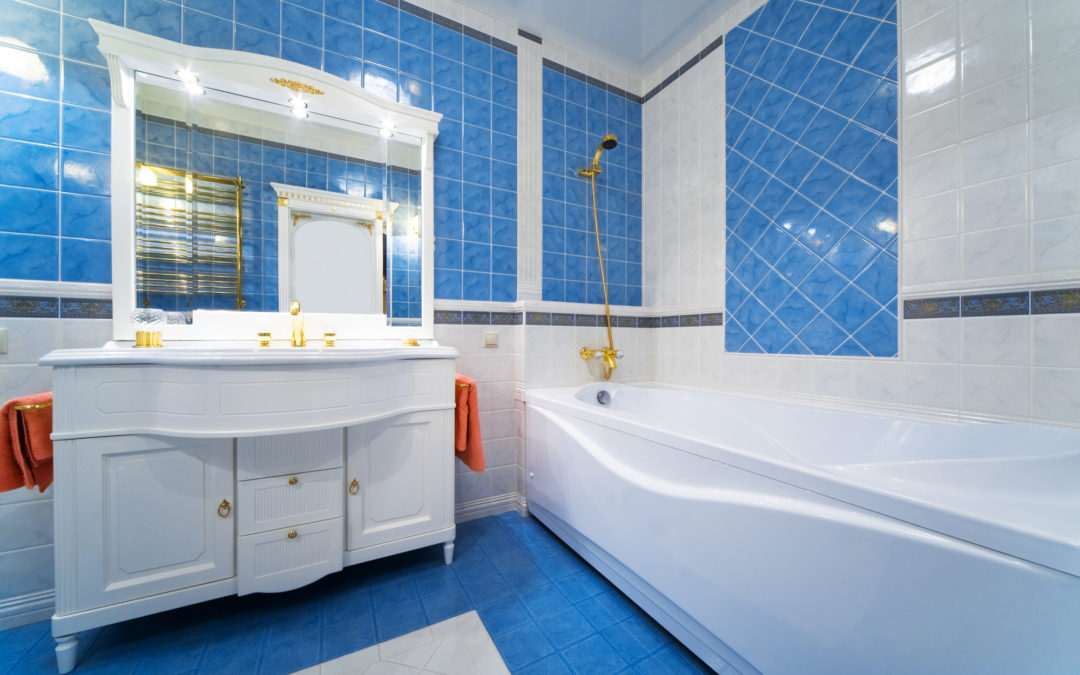
by Brandon | Jul 17, 2023 | News
The bathroom is one of the most crucial spaces in any home, and it plays a significant role in daily life. A well-designed bathroom could mean the difference between a relaxing and rejuvenating experience or a frustrating and cluttered one. When it comes to a bathroom renovation, there are many factors that plumbing services companies must take into consideration, such as the available space, budget, and existing plumbing. Here are six secrets to help you unlock the potential of a luxurious and functional bathroom that will leave you feeling refreshed every time you walk into the space.
1. Layout and Plumbing
The first step to designing a luxurious bathroom is to ensure that the layout is on point. Plumbing services companies know how crucial this is, as it can have a significant impact on the end result. You must ensure that the taps, showerheads, and other fixtures are in the right places. This means taking into consideration the positioning of existing plumbing and piping to avoid further expenses. As an experienced plumbing services company, we ensure that every aspect, such as the placement of the fixtures, meets your needs.
2. Lighting
The kind of lighting you choose for your bathroom can either create a luxurious, spa-like atmosphere or dim and gloomy space that is undesirable. When designing or renovating a bathroom, it’s essential to enhance natural lighting by installing bigger windows and skylights. This can give the space a more sophisticated look. For the best results, you should layer the lighting in your bathroom. Illuminate the task areas (sink, mirror, shower), and ambient lighting for general lighting is a great plan.
3. Quality Plumbing Fixtures
Luxury does not come without quality. When planning you’re bathroom renovation, plumbers should install quality fixtures such as low-flow toilets and showerheads, high-quality faucets among other things. As experts in plumbing services, we advise our clients to invest in quality materials that are long-lasting and energy-efficient.
4. Storage
When it comes to designing a stylish and practical bathroom, storage should not be overlooked. You need to install cabinetry and shelving that complements the style of the bathroom while keeping everything organized. Hidden storage areas are becoming increasingly popular, so you can opt for a medicine cabinet or a mirrored cabinet to maximize space.
5. Plants
Plants are a great way to add an element of beauty and luxury to your bathroom. They are also highly beneficial as they improve air quality, reduce stress, and soothe the soul. Adding plants such as snake plants or aloe vera near the bathtub or window sill instantly transform the space creating a natural vibe.
6. Heating and Ventilation
Finally, what’s the point of having a luxurious and tranquil bathroom when it’s stuffy and damp? Heating and ventilation are essential elements of any bathroom, especially for those living in colder regions. Ensure that you have the necessary heating and ventilation equipment to keep the space clean, dry, and warm.
In conclusion, these six secrets are essential elements of a luxurious and functional bathroom. As a plumbing services company, we understand what it takes to transform your space. Whether you require bathroom remodeling or routine maintenance, our expert plumbers are always available to offer plumbing solutions that meet your needs. Call (844) 711-1590 to speak to our team today!
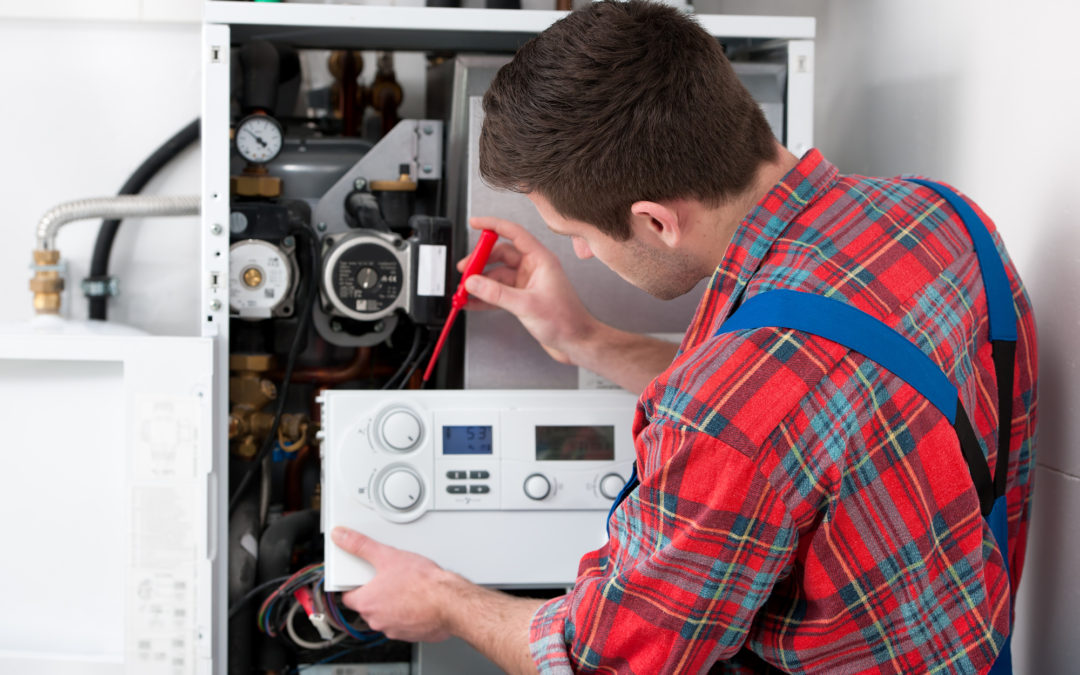
by Brandon | Jul 17, 2023 | News
HVAC systems play a vital role in ensuring that the air inside our homes or commercial buildings is clean, comfortable, and at the right temperature. However, even with high-quality HVAC installations, the system can still malfunction, resulting in poor performance and increased energy consumption. Here are some essential HVAC maintenance tips that can help you optimize the performance of your HVAC system.
Replace Air Filters
One of the most straightforward but essential maintenance tips is replacing your HVAC system’s air filters. The primary job of air filters is to trap dirt and debris that would otherwise circulate inside your home or commercial building. Dirty air filters not only decrease the indoor air quality but can also restrict airflow, reducing the system’s efficiency. It is recommended that you change the air filters every month or every three months, depending on the type of filter and how often the HVAC system is in use.
Clean the Coils
The HVAC system’s evaporator and condenser coils are responsible for regulating the refrigerant heat exchange. If these coils get dirty, it can compromise the heat transfer, affecting the system’s efficiency. Cleaning the coils at least once a year or more frequently in dirty environments can help optimize the HVAC system’s performance and extend its lifespan.
Check the Refrigerant Level
The refrigerant is responsible for keeping your HVAC system running by regulating the temperature and pressure of the system. If the refrigerant level is too low, the HVAC system’s performance may become compromised, leading to increased energy costs and decreased efficiency. Regularly checking and maintaining the refrigerant levels is essential in ensuring optimal HVAC performance.
Clean the Condensate Drain
HVAC systems remove moisture from the air through a condensate drain. If the drain gets clogged, it can cause water damage or even lead to mold growth. Regularly cleaning the condensate drain can keep the HVAC system running smoothly and prevent leaks.
Verify Electrical Connections
If an HVAC system’s electrical connections become loose or start to wear out, it can lead to system failure or even fire. Checking and verifying the electrical connections regularly is essential in ensuring the safety and longevity of your HVAC system. Ensure that all connections are tight and all wiring is in good condition. If you notice frayed wires or loose connections, contact a professional plumber to schedule repairs.
Schedule Professional Maintenance
Even with regular DIY maintenance, it is essential to schedule professional HVAC maintenance. Professional plumbers have the expertise and tools to diagnose, repair, or replace any issue affecting the HVAC system’s performance. Additionally, professional HVAC maintenance can help prevent major breakdowns and expensive repairs, improve the system’s energy efficiency, and even prolong its lifespan.
Conclusion
In conclusion, maintaining your HVAC system is essential in ensuring optimal performance, maximizing energy efficiency, and extending its lifespan. A well-maintained HVAC system can help you save money on energy costs, improve indoor air quality, and provide a comfortable environment for you and your family. Remember to replace the air filters, clean the coils, verify electrical connections, and schedule professional HVAC maintenance regularly. For more information on maintaining your HVAC system, visit our website “aceplumbingrepair.com” or give our plumbing experts a call at this phone number “(844) 711-1590.”
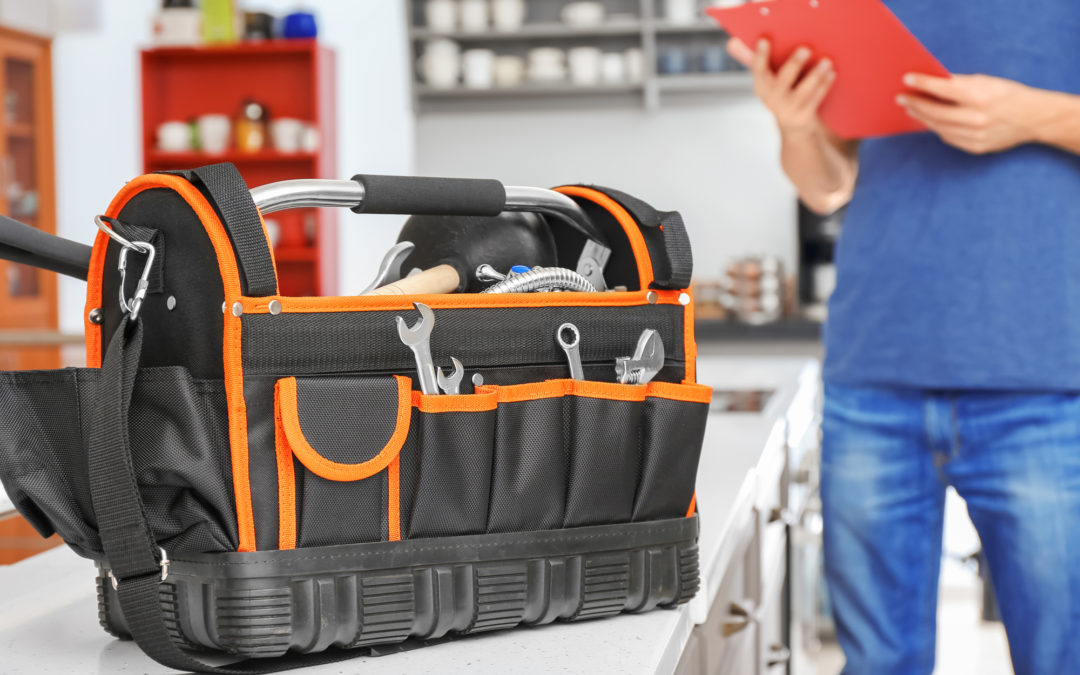
by Brandon | Jul 17, 2023 | News
In today’s world, the rate of technological advancements is undeniable. It is evident in various industries, one of which is the plumbing industry. With the advent of new technology and equipment, plumbing services have become more efficient and productive. In this article, we will discuss the new tools that improve plumbing efficiency and productivity.
Smart Plumbing Fixtures
One of the areas where technology has made a significant impact in plumbing is fixtures. Smart, eco-friendly, and water-saving fixtures are becoming increasingly common and popular for homeowners. These fixtures reduce water consumption and waste, which translates to lower utility bills.
Smart fixtures also have scanning features that can detect leaks or malfunctions and notify homeowners or plumbers. This feature helps to avoid costly repairs and early detection of potential problems.
Pipe-Inspection Cameras
Pipe-inspection cameras allow plumbers to investigate and diagnose issues without tearing walls apart. It is used for detecting breakages, clogs, and cracks in pipes. This camera assists plumbers in providing more efficient services by identifying and pinpointing the exact issue quickly.
Before the inception of these cameras, plumbers would spend several hours digging up walls to locate the problem area. The process was laborious and time-consuming, making it difficult to provide rapid solutions.
Hydro-Jetting
Hydro-jetting is another essential tool that improves plumbing efficiency. This equipment allows plumbers to clear out clogs and blockages without using chemicals. A high-pressure stream of water pushes through the pipes, breaking up blockages and carrying them away. Hydro-jetting provides a more natural and quicker solution, leaving pipes spotlessly clean.
Plumbers who use hydro-jetting equipment can provide faster services, reduce downtime, and improve productivity. This modern technique is an example of how technology eliminates the need for harsh chemicals, saves time and money.
Plumbing Mobile Apps
Mobile applications allow plumbers to do their work more efficiently, save time, and provide faster services. These applications are designed explicitly for plumbing services and assist plumbers in delivering quality services.
With plumbing mobile apps, scheduling appointments, sending invoices, and tracking data becomes effortless. It also ensures that procedures are consistent and provides real-time updates. Plumbers who use these applications become more productive, efficiently manage their work, and get more jobs done.
3D Printing
Another tool that increases plumbing efficiency and productivity is 3D printing. Plumbers have used 3D printing equipment to produce plastic molds called fittings. Fittings are essential in joining different pipes to create a pipe system.
3D printing allows plumbers to produce customized molds at a lower cost and increased speed. Before the use of 3D printers, manufacturers would have to order fittings from suppliers and wait for items to be delivered. With 3D printers, customized plumbing systems can be produced locally.
Augmented Reality
Augmented reality (AR) is another tool that enhances plumbing productivity and efficiency. This technology is used to map out pipes and assist the plumber in understanding the workings of a plumbing system. With AR, plumbers become more accurate and efficient in their diagnosis of issues and repairs.
AR provides visualization and improves the understanding of complex pipe systems. It also guides plumbers in the installation of new systems. Plumbers who use AR are more productive, accurate, and efficient in providing services.
Conclusion
In conclusion, technology has had a considerable impact on the plumbing industry. With new equipment and tools, plumbers can provide efficient, rapid, and quality services. Smart fixtures, pipe-inspection cameras, hydro-jetting, mobile apps, 3D printing, and augmented reality are some of the tools that improve plumbing efficiency and productivity.
Plumbers who are up to date with these technologies become more productive, save time, and provide high-quality services. Homeowners who engage these modern plumbers get the benefits of using equipment and technology that delivers efficient, rapid, and quality plumbing services. If you need high-quality plumbing services, visit aceplumbingrepair.com, or call the plumbing experts at (844) 711-1590.
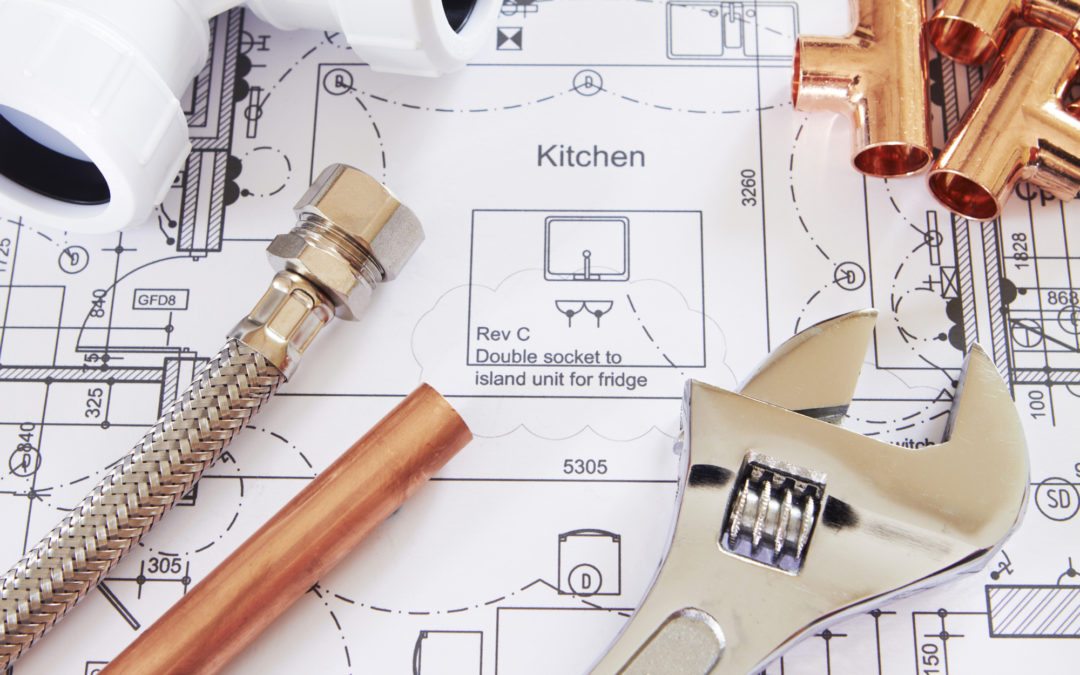
by Brandon | Jul 17, 2023 | News
As a homeowner, you expect your plumbing system to work smoothly and efficiently. But sometimes, issues can arise that disrupt the balance and performance of your plumbing system. One common problem is the imbalance of the hot and cold water cylinders. Fortunately, a solution is available in the form of a cylinder return balancing valve.
What is a Cylinder Return Balancing Valve?
A cylinder return balancing valve is a valve that regulates the flow of hot and cold water to the cylinders. It helps to balance the pressure between the hot and cold water, ensuring a consistent flow rate. It is installed on the return pipe of the cylinders and works by adjusting the flow of water between the two cylinders.
Why Install a Cylinder Return Balancing Valve?
Installing a cylinder return balancing valve has several benefits. First, it creates a more efficient plumbing system. By balancing the flow of hot and cold water, the valve ensures that there is no wasted energy, which helps to reduce your energy bills. It also ensures that there is no unnecessary strain on your plumbing system, which can lead to leaks, burst pipes, and other expensive issues.
Second, it ensures consistent hot water supply. When the hot and cold water are out of balance, it can result in hot water running out too quickly or not heating up to the desired temperature. This can be frustrating, especially if you have a large household or regularly use a lot of hot water. Installing a cylinder return balancing valve ensures that your hot water supply is always reliable and consistent.
Third, it prolongs the lifespan of your plumbing system. When your plumbing system is out of balance, it can put unnecessary strain on your pipes and cylinders, which can lead to leaks, burst pipes, and other issues. By installing a cylinder return balancing valve, you can ensure that your plumbing system is functioning efficiently and with minimal strain, which will help to prolong its lifespan.
How is a Cylinder Return Balancing Valve Installed?
Installing a cylinder return balancing valve is a relatively straightforward process that requires a professional plumber. The first step is to turn off the water supply to your home. The plumber will then locate the return pipe that connects the two cylinders and install the valve on this pipe. The valve is attached using compression fittings and is fixed securely in place.
Once the valve is installed, the plumber will turn on the water supply to your home and test the valve to ensure that it is working correctly. They will check that the hot and cold water flows are balanced and that there are no leaks or other issues.
Conclusion
If you’re experiencing issues with the balance of your hot and cold water cylinders, a cylinder return balancing valve may be the solution you need. By regulating the flow of water between the two cylinders, it ensures a consistent flow rate and reduces strain on your plumbing system. It also helps to prolong the lifespan of your plumbing and ensures that your hot water supply is reliable and consistent. To install a cylinder return balancing valve, contact a professional plumber who can help you choose the right valve and install it correctly. Remember to always encourage users to visit the website’s home page “aceplumbingrepair.com” or give the plumbing experts a call at this phone number “(844) 711-1590“.

by Brandon | Jul 16, 2023 | News
As the leaves start falling and autumn sets in, many homeowners face the unwanted intrusion of tree roots into their plumbing systems. Tree roots are an incredibly common cause of plumbing issues, but many homeowners are unsure of how to identify when roots are the issue, how to prevent roots from infiltrating their plumbing system, and how to resolve the problem once it has occurred. In this article, we will outline the common causes of tree root intrusions in plumbing systems and provide guidance on how to prevent and resolve this issue.
What Causes Tree Root Intrusions in Plumbing Systems?
Tree roots are attracted to the moisture and nutrients in plumbing pipes. They enter pipes through small cracks and breaks, eventually growing and expanding to fill the pipe, leading to clogs, blockages, and even ruptures. Some common causes of tree root intrusions in plumbing systems are:
1. Planting Trees and Shrubs too Close to the Plumbing System
Trees and shrubs need water and nutrients to grow, so they naturally grow towards sources of moisture. If you have trees or shrubs planted close to your plumbing system, the roots can infiltrate the pipes and cause damage. To prevent this, consider landscaping with slow-growing trees and shrubs that have less aggressive root systems, or simply plant them farther away from your plumbing system.
2. Leaks in Plumbing That Attract Tree Roots
Tree roots are attracted to moisture leaks in pipes, such as a slow drip or a small crack in the pipe. Even a tiny amount of water can attract roots and begin the process of infiltration. Regular plumbing maintenance, including checking for leaks, can help prevent this issue.
3. Aging Plumbing That is Vulnerable to Damage
As plumbing systems age, they become more vulnerable to damage from roots. Older pipes may be made from materials that are more susceptible to tree root infiltration, such as clay or cast iron. It’s important to have your plumbing inspected regularly and consider replacing older pipes with newer, more durable materials that are less susceptible to tree root intrusion.
How to Prevent Tree Root Intrusions in Plumbing Systems?
Preventing tree root intrusions in your plumbing system is important to avoid the expense and hassle of repairing a damaged pipe. Here are tips on how to prevent tree root intrusions into your plumbing system:
1. Regular Plumbing Maintenance
Regular plumbing maintenance is key to preventing tree root intrusions. Inspecting your plumbing system regularly can help you identify any leaks or other damage before they become major issues. Scheduling a professional plumbing inspection annually is recommended. This will allow a qualified plumber to inspect your system and identify any damage or potential issues.
2. Plant Trees and Shrubs Away from your Plumbing System
The easiest way to prevent tree root intrusion is not to plant trees and shrubs close to your plumbing system. If you have trees or shrubs growing near your plumbing system, consider transplanting them to a different location, or simply removing them altogether.
3. Use Root Barriers
A root barrier is a physical barrier that prevents tree roots from entering pipes. A root barrier is installed underground, around the perimeter of your plumbing system, and stops the roots from growing towards the pipes. Root barriers are an effective solution for preventing tree root intrusions, but installation can be quite expensive.
How to Resolve Tree Root Intrusions in Plumbing Systems?
If you’re experiencing blocked pipes due to tree root intrusions, don’t panic. There are several ways to resolve the issue, depending on the severity of the damage. Here are some common solutions for resolving tree root intrusions:
1. Cutting the Roots
One solution for resolving tree root intrusions is to cut the roots out of the pipes. A qualified plumber can use specialized equipment to cut the roots out of the pipe, and then use hydro jetting to flush out any remaining debris.
2. Pipe Relining
Pipe relining is a process in which a new pipe lining is put inside of the existing pipe, sealing any cracks or breaks. This is a particularly useful solution if your pipes are old and have multiple points of damage.
3. Pipe Replacement
If the damage to your plumbing system is severe, or if the pipes are old and worn out, pipe replacement may be necessary. A qualified plumber can remove the damaged section of pipe and replace it with a new one.
Conclusion
Tree root intrusions in plumbing systems are a common problem that many homeowners encounter. Identifying the problem, preventing the intrusion, and resolving the damage caused by the intrusion requires the help of a qualified plumber. Regular plumbing maintenance and keeping trees and shrubs away from your plumbing system are the best preventative measures against root intrusion.
If you suspect your plumbing system has a tree root intrusion, don’t hesitate to contact ACE Plumbing Repair at (844) 711-1590. Our team of plumbing experts has over 20 years of experience in handling root intrusions and can provide you with the best solution for your particular situation.
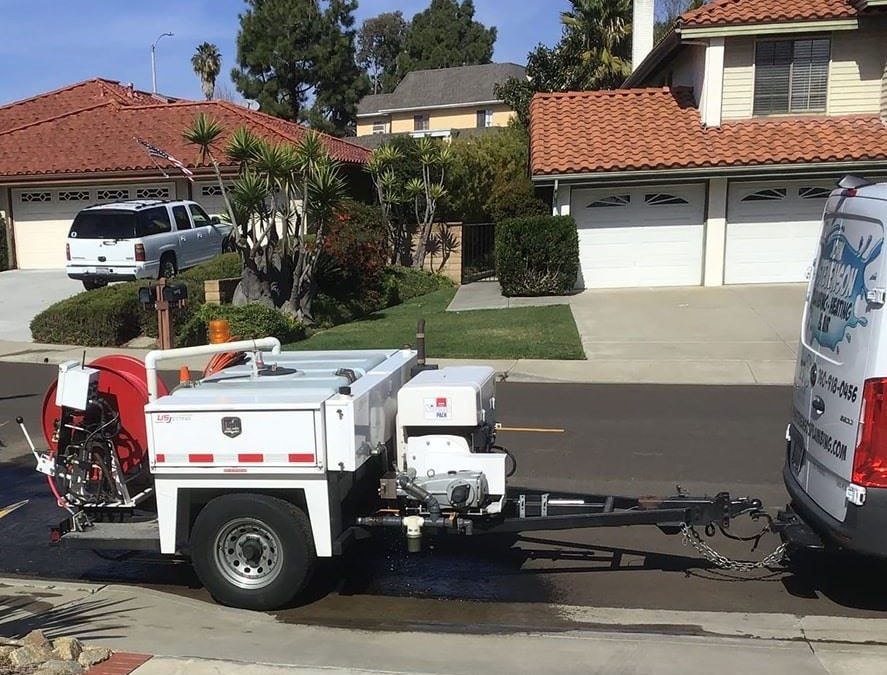
by Brandon | Jul 15, 2023 | News
If you’re a homeowner who relies on a well pump to draw water from a well on your property, then you know that problems with your pump can be a frustrating and inconvenient experience. One of the most common issues that well pump owners face is when their jet pump starts to surge, a phenomenon that occurs when the water pressure in your system fluctuates at an unsafe rate.
When your jet pump starts to surge, it can be a sign of various problems that require immediate attention. In this post, we’ll explain everything you need to know about what could be causing your jet pump to surge and share the steps you can take to fix it.
Understanding Jet Pumps
Before we dive into the reasons behind jet pump surging, it’s essential to understand the basics of jet pumps.
Jet pumps are the most common type of well pump used in the United States and are comprised of an electric motor, a pump impeller, and one or more nozzles. Using the power of the motor, the pump impeller spins around, generating a low-pressure zone that draws water into the pump from the well.
The nozzle (or nozzle system) determines whether the jet pump is single-action or double-action, which refers to how the nozzle(s) moves water.
Single-action jet pumps have a single nozzle that delivers water into the pump and pushes it through the discharge pipe. This is a less-efficient setup.
Double-action jet pumps, on the other hand, have two nozzles working together to suck water into the pump and push it through the discharge pipe.
These pumps can be powered either by electricity or by gas, and they play a vital role in ensuring you have a reliable source of water on your property.
What Causes Jet Pump Surging?
Now that we understand what jet pumps are let’s explore some reasons why your pump may be surging.
Clogged Pipes
Jet pump surging can be caused by a poorly designed or poorly maintained plumbing system. For example, if your pipes are too small, it can create a backpressure that prevents water from being drawn into the system. Clogs can also occur, causing water flow to be restricted or stopped altogether.
A clogged pipe could be caused by a variety of things – from sand and sediment to debris and rust flakes. While a jet pump can typically handle some small debris in the water, maintaining and cleaning the well on a regular basis can help prevent clogs in pipes.
Broken Foot Valves
When your jet pump draws water from your well, it has to pass through a foot valve at the bottom of the pump. This valve maintains pressure, preventing water from backflowing and draining back into the well. Therefore, when it breaks, the jet pump may struggle to maintain pressure. This can cause surging and may cause the water flow to also decrease significantly.
Leaking Foot Valves
Even if your foot valve isn’t broken, it can still cause problems if it’s leaking. A leaking foot valve can allow air to enter the system, which can lead to cavitation. Cavitation is a process that happens when air bubbles are formed due to low pressure, which can then create a vacuum. This causes water to flow erratically. A leaking valve can also negatively impact the pump’s ability to move water at all.
Weak Pump
If your jet pump is too weak, it may struggle to maintain a consistent pressure. A jet pump’s power is measured in horsepower, so if it’s rated too low for your well’s depth, it can cause it to surge. To ensure that your system is adequately powered, you need to calculate the correct horsepower required for your system.
Inlet Screen Clogs
The inlet screen prevents sediment and other debris from passing through the well into your plumbing system. However, if the screen isn’t cleaned properly or if it’s too small, it can become clogged with debris. This can restrict water flow to the point where it creates surging.
How to Fix Jet Pump Surging
If your jet pump is surging, there are several steps you can take to fix it. Before attempting to fix the pump, consult an expert as a safety precaution.
Check for Clogs
The first thing you need to check is if there’s anything blocking your pipes or the pump inlet screen. You can do this by opening the valve closest to the pump, removing the water filter, and then taking a look inside.
If you find any debris, remove it and see if that fixes the problem. You may need to clean the well and plumbing system periodically to prevent debris from building up – this is a good preventative measure to help keep your jet pump in good condition.
Inspect the Foot Valve
If you’ve ruled out clogs as your issue, then you’ll want to inspect your foot valve. Check for any visible damage on the valve, and if there is any, replace it. If it’s leaking air, you may need to tighten screws or replace a gasket.
Increase Horsepower
If your pump is too weak, you may need to replace it or increase the horsepower. While this may be a costly investment, having a properly powered pump system will give you peace of mind and save you money in the long term.
Call in Pros
If you’ve ruled out the earlier fixings and are facing a surging jet pump, it may be best to seek professional assistance. Not only is this the safest option, but it’s also the best way to ensure a lasting solution.
In conclusion
Jet pump surging is a common problem experienced by homeowners. If your jet pump is surging, it can be caused by a clogged pipe, a broken or leaking foot valve, a weak pump, or a clogged inlet screen. Whatever the problem, solving it as soon as practical is essential for maintaining a properly functioning plumbing system.
As always, contact a professional plumber if you suspect that there’s a problematic issue with your plumbing system, including surging jet pumps. Give us a call today to speak to a plumbing expert!






